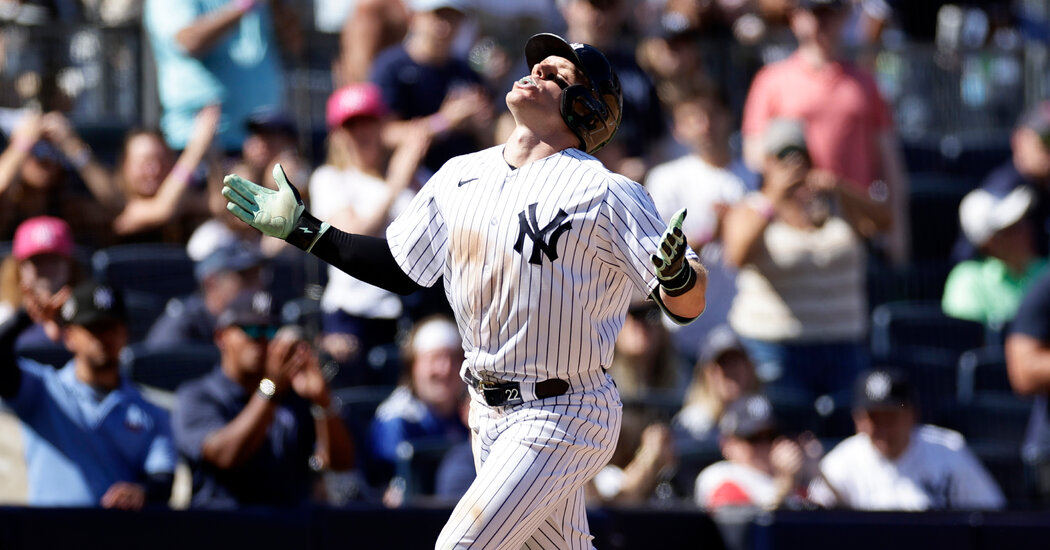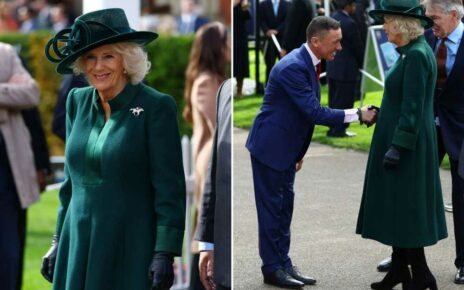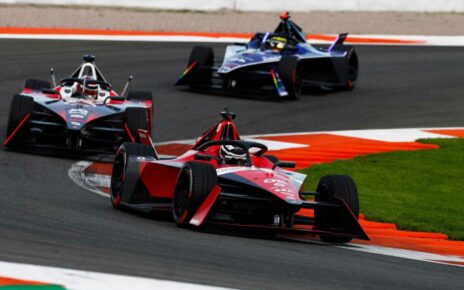Minutes before Major League Baseball’s trading deadline last season, Paul DeJong, the shortstop for the St. Louis Cardinals, received a notification on his phone. It was a message in the team group chat from center fielder Harrison Bader, one of DeJong’s closest friends.
“He said, ‘Sorry, guys, but they told me I’ve just been traded to the Yankees,’” DeJong recalled. “I didn’t believe it at first. I was like, ‘Why the heck did we trade our best outfielder?’ I was honestly shocked.”
That was the reaction throughout the St. Louis clubhouse that afternoon as word spread that the Cardinals had agreed to send Bader, who is from Bronxville, N.Y., to the Yankees for the left-handed starting pitcher Jordan Montgomery, a rare one-for-one swap between playoff contenders.
The move was a surprising pivot for the Cardinals, who in late 2018 had positioned Bader as their center fielder of the future. A dynamic athlete with golden locks unfurling from his cap, he had emerged as an elite defender and base runner with the potential to become an above-average hitter. But his results thus far had struggled to live up to his hype.
“It was challenging,” Bader said about getting traded. “As happy as I was to be in the new organization — especially the Yankees, my hometown and everything — I just still couldn’t get over the fact that I felt like I had so much unfinished business in St. Louis.”
This weekend, as Bader returns to Busch Stadium to face his former team for the first time, the trade appears to have been the almost mythical win-win. Montgomery solidified the St. Louis rotation down the stretch last season, and he has continued to pitch well this year despite his team’s woes. Bader, even with time missed because of injuries, has finally looked like the player the Cardinals always thought he could be.
“It was only a matter of time before it really clicked for him,” said Stubby Clapp, the first base coach of the Cardinals, who had managed Bader in the minor leagues. “When you get him on the field and he’s healthy, he’s going to do good things. He brings everything to the team that you need.”
The biggest difference for Bader since he joined the Yankees is his power at the plate. Including his strong postseason last year, in which he batted .333 with five home runs and a 1.262 on-base plus slugging percentage, Bader has slugged .480 across 58 games through Thursday. While the sample is small, that figure is 75 percentage points higher than what he posted in 533 games with the Cardinals.
There are reasons to believe his surge is more than a small-sample mirage. He has drastically cut his strikeout rate, from 26.1 percent with the Cardinals to 17.4 percent with the Yankees and has also increased his launch angle, which has resulted in more fly balls. Fewer strikeouts and more fly balls is generally a good recipe for a batter who plays home games at the hitter-friendly Yankee Stadium. That’s especially true for someone who previously played half his games at Busch Stadium, a park that favors pitchers.
“Busch is really big,” Bader said. “Look at the dimensions of the field and how the ball plays.” He added, “Those big, long lofted fly balls go to the base of the wall there.”
He would know, and not just because of all the fly balls he ran down in center field. No player has suffered the perils of hitting at Busch Stadium more than Bader, whose .634 O.P.S. at that park is the worst for any player with at least 500 career plate appearances. In his 865 plate appearances away from Busch Stadium as a Cardinal, his O.P.S. was .820 — the same O.P.S. that the Hall of Famers Rickey Henderson and Harold Baines had for their careers.
“I think Busch could have gotten in his head a little bit, because he does have a lot of natural power,” DeJong said. “I think maybe he got mentally a little discouraged by it.”
The proverbial change of scenery is perhaps the least scientific of the remedies that people in baseball prescribe for underperforming players, but that doesn’t mean it can’t work. That said, when the Yankees are involved in a change-of-scenery swap, the player in need of starting over is usually heading away from New York.
And yet, both DeJong and Jordan Hicks, a Cardinals reliever, said New York was the perfect place for their friend to play, for reasons that went beyond the hitter-friendly stadium. “He was born and raised there,” Hicks said.
“It’s like coming home for him,” DeJong said. “I think that means a lot to him. I think he’s super emotional as far as, like, how much he cares and values little things like what uniform he wears, or where he’s playing, or who’s around him. I think those little environmental things can really be positive triggers for him.”
The spotlight has never really fazed Bader. Having grown up in the suburbs of New York, he is familiar with the city’s frenetic atmosphere and the pressure that comes with playing for one of its professional teams.
“I’m extremely comfortable here,” he said. “I’m extremely comfortable, but it’s an incredibly uncomfortable environment. There’s a lot of pressure at all times. There’s a lot of noise. Even when you wake up in the morning and you start your day, it’s just — if you take a step back and you kind of zoom out for a second, I mean, it’s absolutely insane.”
He added: “I find ways to just settle into those moments where the noise couldn’t be louder, the fans couldn’t want more success. All these things make me better.”
Bader has made the Yankees better, too. This season, they are 24-11 in games in which he has played and 21-25 without him. Naturally, those records also reveal the biggest problem for Bader since he arrived in New York: staying healthy.
He was on the injured list with plantar fasciitis when the Cardinals traded him on Aug. 2, and he didn’t make his Yankees debut until Sept. 20 — 42 games later. He strained an oblique during spring training and missed the first 30 games of this season, and then missed 16 more with a hamstring injury.
The Yankees acquired Bader so they could move the 6-foot-7, 282-pound Aaron Judge back to right field, his primary position. Instead, because of Bader’s injuries, the Yankees have had to use not just Judge in center, but also Isiah Kiner-Falefa, an infielder and catcher who before this season had never played the outfield in a major league game.
Finding a way to keep Bader on the field is crucial for the Yankees, but also for his own future in baseball. A free agent after this season, the 29-year-old remains, in the words of Hicks, “one of the best outfielders I’ve ever seen play the game.” If he keeps improving at the plate and avoids another injury, he could be one of the more sought-after players in the coming off-season.
That such a payday is possible shows just how far Bader has come in less than a year since he last wore a Cardinals uniform. Being traded stung, but as much as he loved his time in St. Louis, leaving was probably a blessing.
“It was a really important reminder,” Bader said. “Everybody has grand plans all the time. There’s always going to be a situation in life, whether it’s related to your career, where somebody just yanks the rug out from under you, and you have to find a way to just keep moving.
“And so far, it’s worked out.”
Source: Read Full Article



